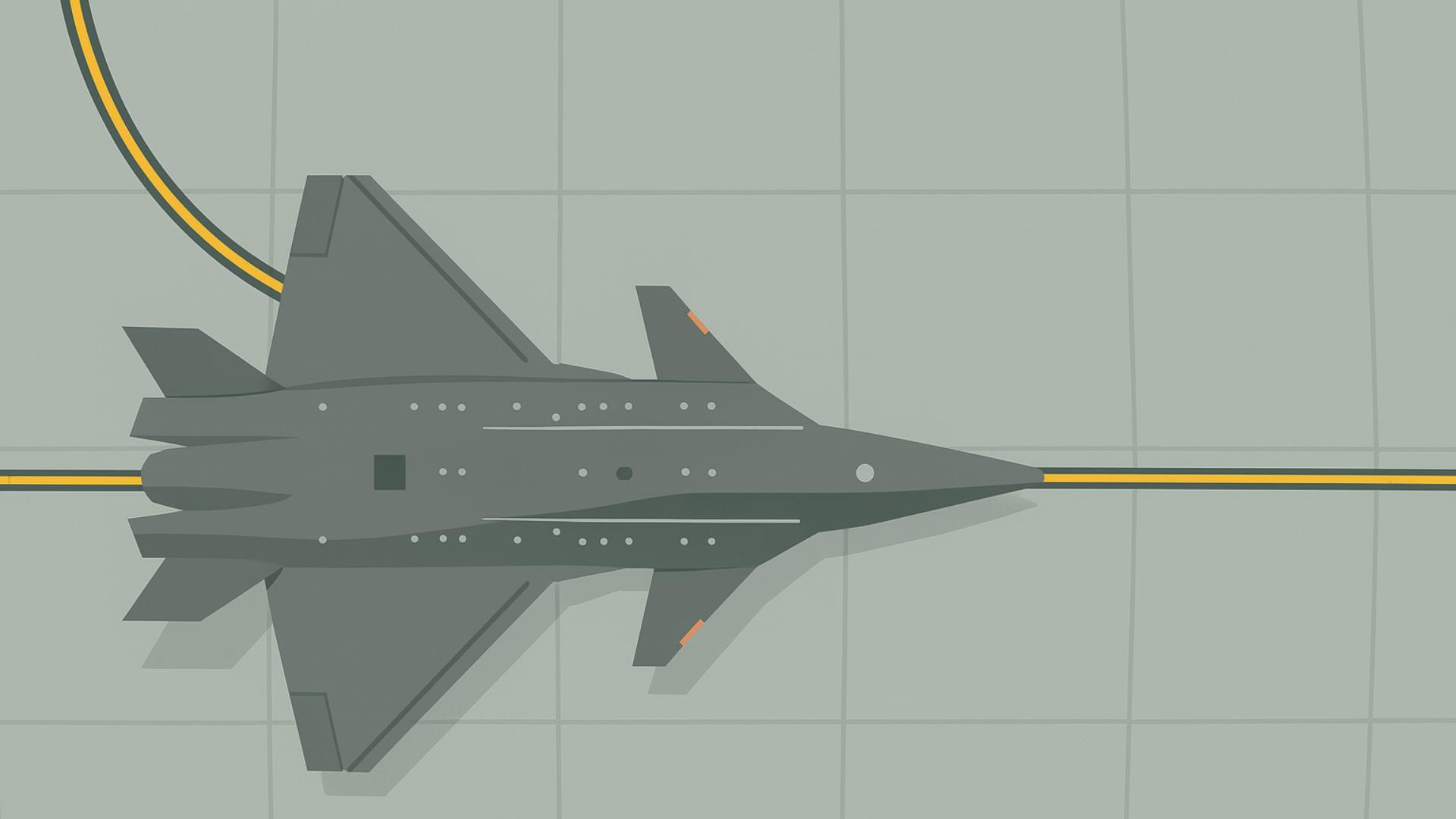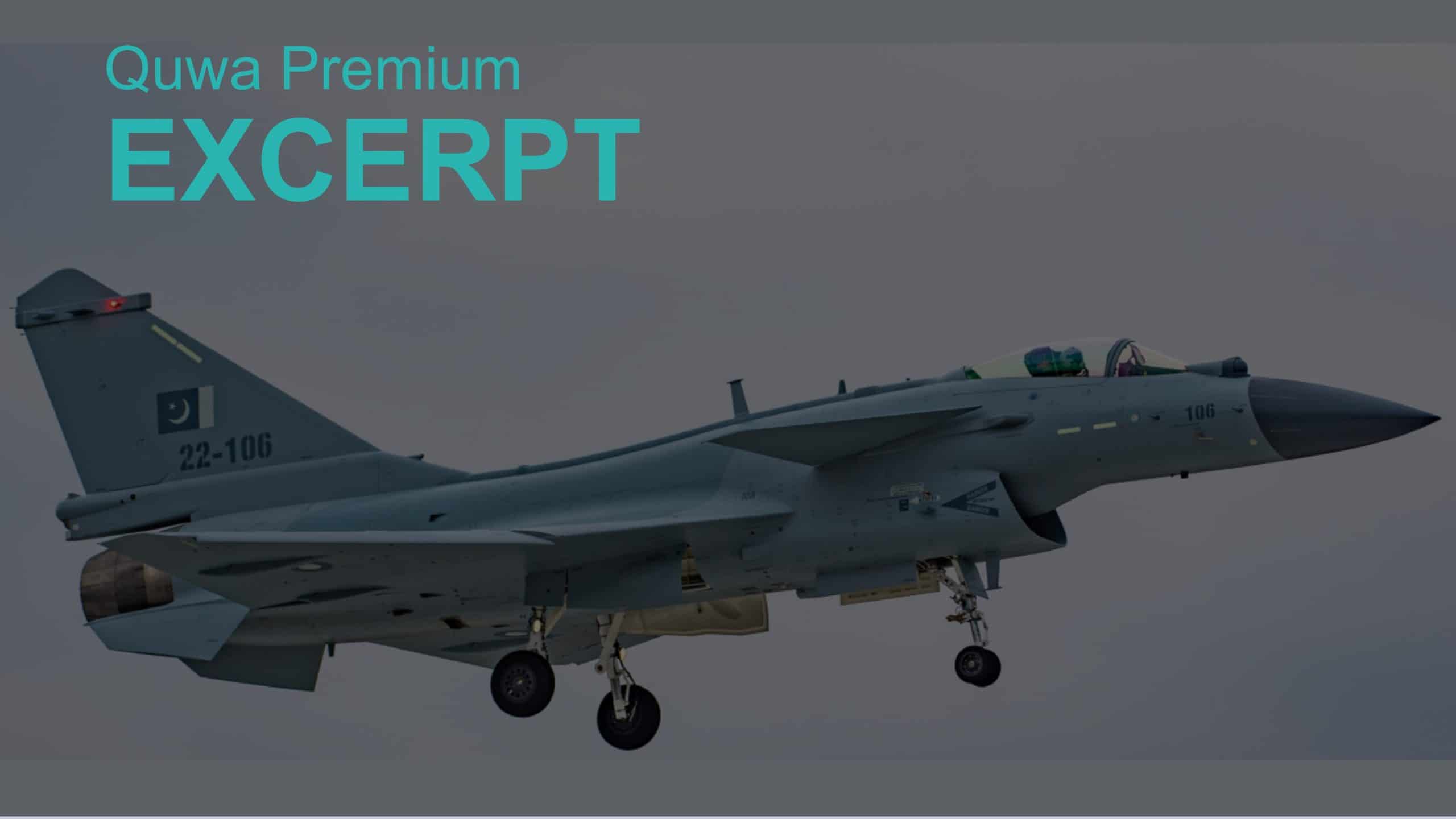13174Views

Beyond Link-17: Why Pakistan Will Need to Develop a Next-Generation Data-Link System Quwa Premium
In the race to develop a next-generation Unmanned Combat Air Vehicle (UCAV), the focus is often on the stealthy airframe. But the platform’s true effectiveness – and its greatest vulnerability – lies in a component that is frequently overlooked: its tactical data-link.
A failure here renders a multi-billion dollar stealth drone a brightly lit target on enemy screens. For the Pakistan Air Force (PAF), developing this system means solving a fundamental conflict at the heart of modern air warfare.
What This Article Explores
- The Central Conflict: A Whisper vs. a Shout. A high-end UCAV is expected to perform two contradictory missions, each demanding opposite things from its data-link.
- Deep Strike & Intelligence, Surveillance, and Reconnaissance (ISR): For penetrating enemy airspace, the data-link protocol or platform must be a “whisper.” It needs a Low Probability of Intercept/Detect (LPI/LPD) waveform that hides its signal in the background noise to survive. High latency is an acceptable trade-off for staying invisible.
- Air-to-Air Combat: For fighting other aircraft, the data-link must be a “shout.” It requires an ultra-low latency, high-bandwidth connection for the rapid decision-making (OODA loop) needed to win an engagement. Studies show that even milliseconds of delay can render an unmanned fighter platform ineffective in combat.
The Technology Solution: An Adaptive Network. A “one-size-fits-all” data-link is impossible. The solution lies in a tiered, intelligent system that can switch modes based on the tactical need.
This requires cognitive radio technologies that use AI to manage the electromagnetic spectrum, a field Pakistan’s Centre for Artificial Intelligence and Computing (CENTAIC) is already exploring.
Antennas must also be conformal – i.e., embedded into the aircraft’s skin – making the data-link a fundamental part of the airframe’s design from day one.
The Strategic Roadmap for Pakistan. While Pakistan’s indigenous Link-17 tactical data-link (TDL) system is a major achievement in networking existing assets, its omnidirectional nature is a fatal flaw for stealth operations. The path forward is a two-pronged strategy:
- Partner for Hardware: Engage in strategic co-development, likely with partners like Turkey, to absorb critical hardware technologies for components like software-defined radios and conformal antennas.
- Innovate on Software: Focus indigenous talent on the “leap-ahead” algorithmic edge – developing sovereign cognitive radio algorithms and AI-generated stealthy waveforms where Pakistan can build a unique competitive advantage.
The Bottom Line: The challenge is not simply to build a stealth drone. It’s to create an intelligent, adaptive communications architecture that gives it a lethal voice in combat but also knows precisely when to stay silent.
There's More to Next-Gen Air Warfare Than Stealth
Of all the myriad complexities involved in developing a next-generation Unmanned Combat Air Vehicle (UCAV), one of the most critical, and yet frequently overlooked, aspects is the tactical data-link.
In the context of a future UCAV program for the Pakistani aerospace industry, a particular focus on emissions control is paramount, especially when discussing stealth capabilities.
It’s one thing to design a sophisticated, stealthy airframe with advanced radar-absorbent materials, but the effectiveness of these features is fundamentally tied to how well electronic emissions are managed.
Emitting signals in a hostile environment is akin to waving a flashlight in a dark room; regardless of how well-designed your physical frame is for low observability, your emissions will give you away.
This article will take a stepped approach to explore the nuances of developing a next-generation data-link for a high-end Pakistani UCAV, one capable of both air dominance and deep strike missions.
We will derive the necessary specifications from the mission profiles themselves, which, as we will see, present a fundamental conflict in their requirements.
Why Data-Links and Communications Are a Key Piece of UCAV Development
For any stealth platform, its primary advantage is predicated on its ability to remain undetected. The very act of transmitting on a data-link, therefore, represents its moment of greatest vulnerability.
Any emission, no matter how faint, is potentially detectable by sophisticated enemy electronic support measures (ESM) and electronic intelligence (ELINT) systems.
Modern detection capabilities are astonishingly sensitive; to illustrate, the small AESA panels on a tank’s active protection system can potentially be detected from hundreds of miles away.
This reality underscores the central challenge for a UCAV’s communication system: it must enable command and control, data transfer, and situational awareness without compromising the platform’s core attribute of stealth.
A failure in emissions control renders the most advanced low-observable airframe a conspicuous target, a Christmas tree lit up for adversary surveillance systems to see.
Therefore, the data-link is not merely an ancillary component but a fundamental, mission-critical system that must be designed with stealth as a primary driver from the outset.
The 'Tension' Between a Deep Strike and Autonomous Fighter Role
When we consider the desired roles for a high-end UCAV – air dominance and deep strike – we encounter a significant conflict in the requirements for its tactical data-link.
End of excerpt (803/2,932 words).
Existing Quwa Plus members can log in below
Note: Logged in members may need to refresh the article page to see the article.


